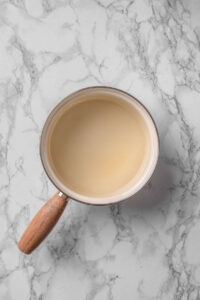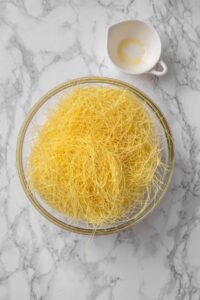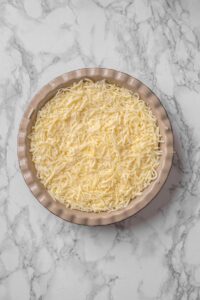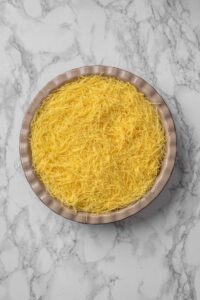This stunning dessert features delicate threads of toasted kataifi dough, a sweet cheese filling, and a rose water syrup.
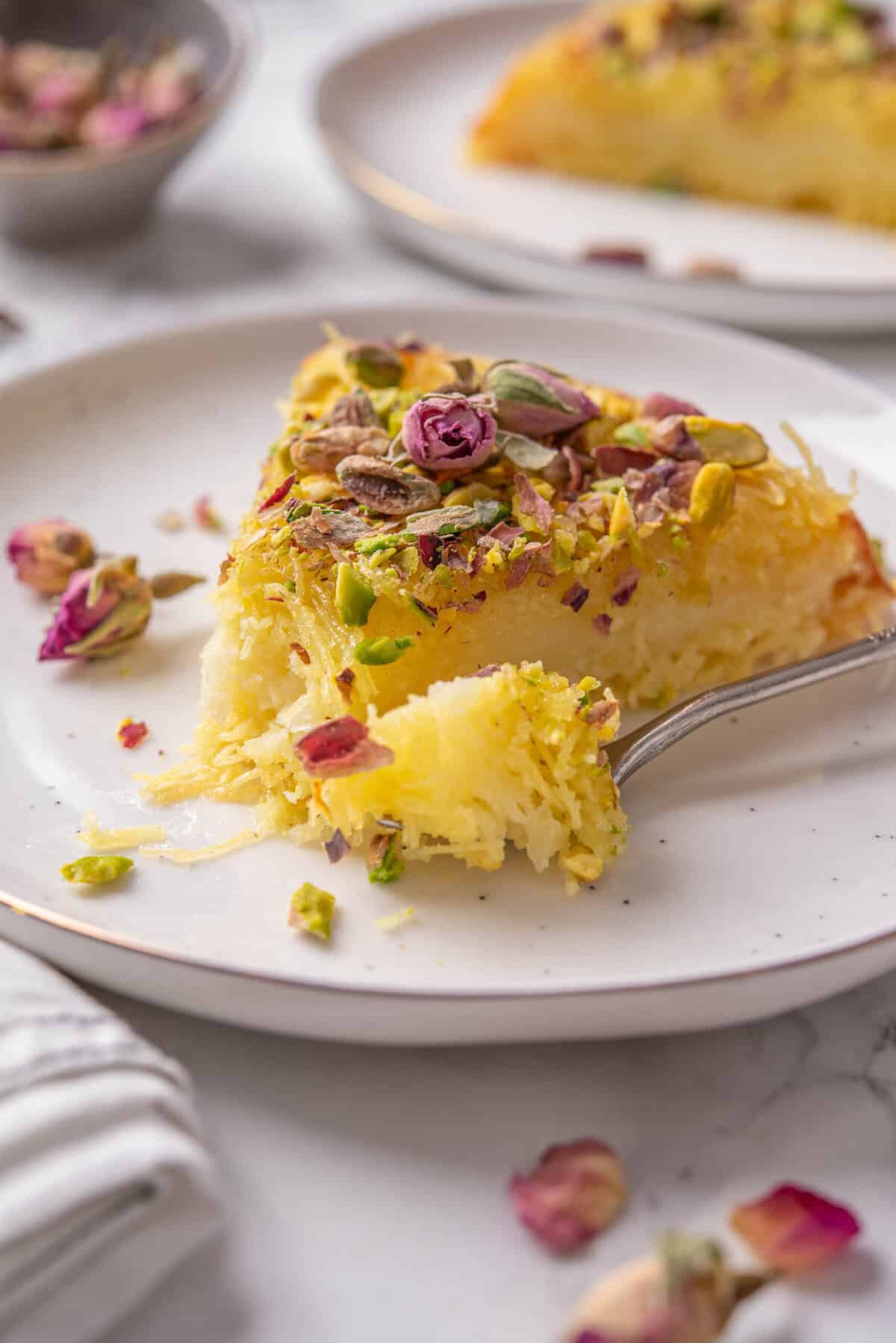
If you’ve been traversing the internet recently, you’ve probably seen content emerging about this famous Arabic dessert that resembles shredded wheat. Variations of knafeh exist all over the Middle East and North Africa, especially throughout the Levant. I’ve had the pleasure of tasting Egyptian and Turkish varieties, both of which have quickly become top-five favorites.
Early mentions of knafeh date back to 10th-century texts, though its exact origin is hard to pinpoint. If you’re from other parts of the world, this may not be a typical dessert. Certain ingredients like finely spun phyllo dough, rose water, and a specific variety of Arabic cheese give knafeh its distinct flavor and texture. But this is an example of humble ingredients executed in the most exquisite and thoughtful way. This recipe takes under an hour to make, and prior to learning how it’s done, I would have never guessed it could be prepared in less than four hours. Make this dessert for your next festive dinner, and your friends and family will thank you.
Is Knafeh Healthy?
Knafeh is considered a fairly rich dessert, thanks to the butter, sugar, and cheese, so it’s best enjoyed in moderation. While there are a few adjustments you can make, substituting too many ingredients may significantly alter the recipe. To lighten it up, you can reduce the sugar by about 1/4 cup or use a monk fruit sweetener in lieu of sugar. Keep in mind that sugar alternatives like monk fruit and stevia are much sweeter than regular sugar, so use them sparingly. You can also swap in plant-based butter and, if you find a plant-based cheese that melts well, try that as a substitute. However, these changes may affect the flavor and texture of the knafeh.
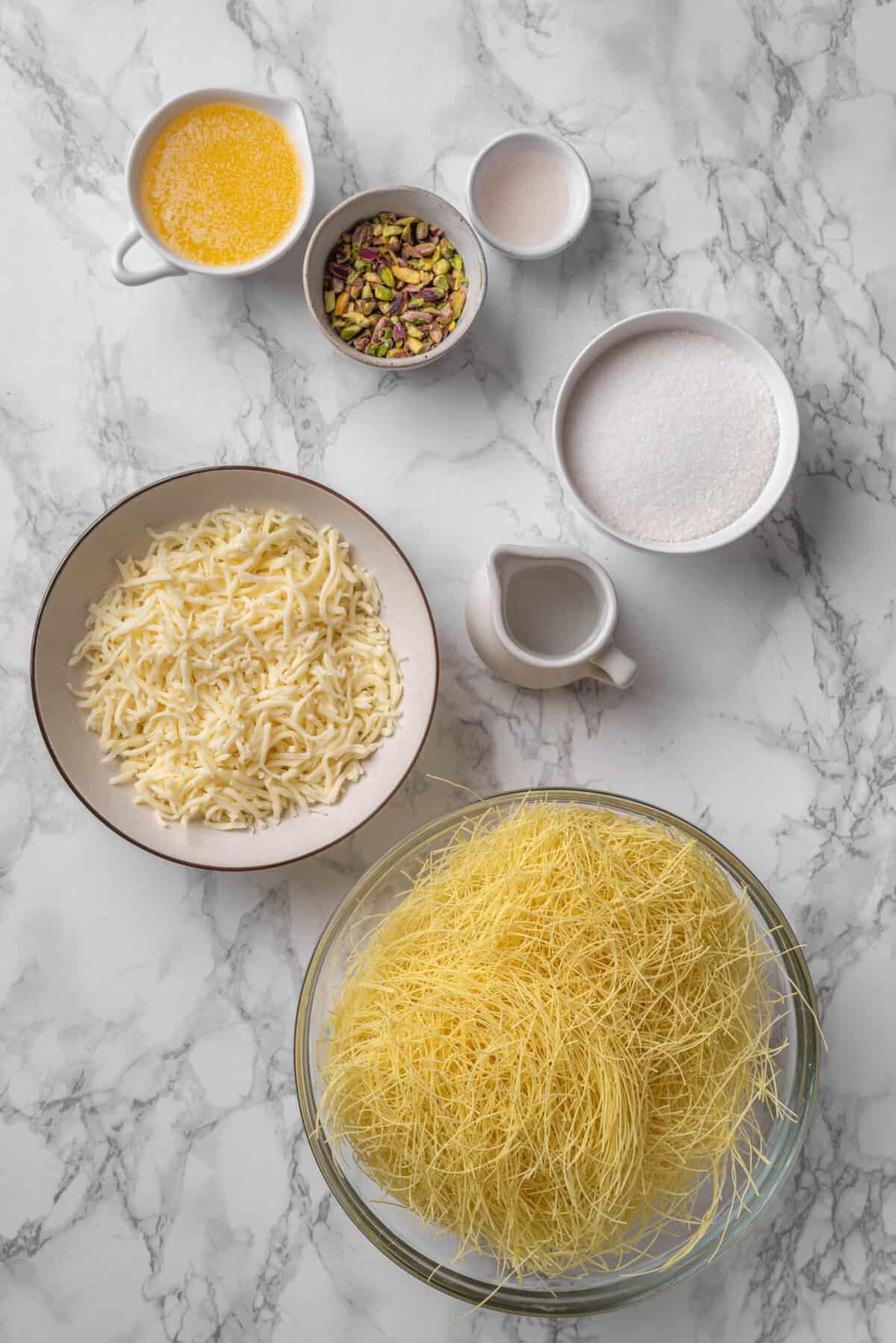
What Kind Of Cheese Is In Knafeh?
The key to a good knafeh lies in the cheese. Traditionally, Arabic knafeh recipes call for Nabulsi or Akkawi varieties of cheese, both of which are soft, white, and slightly salty cheeses, usually made from a blend of goat and sheep milk. These cheeses offer the ideal texture and a mild flavor, which work well in a dessert like this. Of course, depending on where you’re located, these cheeses may not always be the easiest to get your hands on. If you live near a Palestinian market or an Arabic grocer, you might be in luck! If you’re unable to source Nabulsi or Akkawi cheese, a reliable substitute is fresh mozzarella, which has a similar stretchy and meltable consistency. While it lacks the distinct saltiness of the aforementioned cheeses, it’s widely considered a decent substitute.
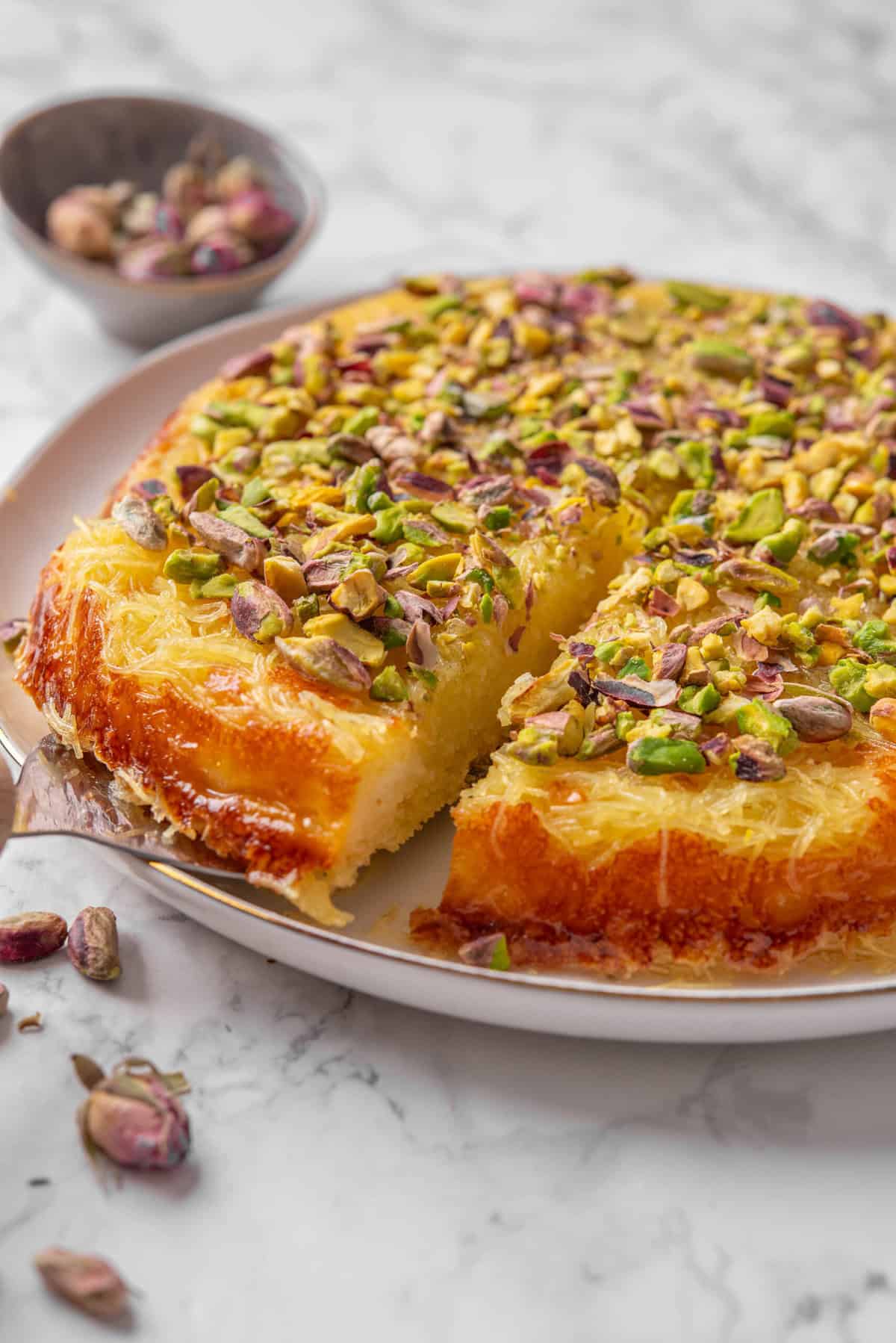
FAQs & Tips
Store your leftover knafeh in an airtight container in the fridge for up to 3 days.
Yes, you can totally use other nuts. Pistachios are the traditional nut used for garnishing knafeh and many other Arabic desserts, but feel free to substitute them with walnuts, cashews, or hazelnuts if you prefer. Be sure to chop the nuts very finely. Toasting the nuts beforehand is always a good idea.
To get the desired texture, make sure your melted butter is evenly distributed throughout the kataifi dough before baking. You can also increase the oven temperature slightly in the last 2 minutes to help crisp up the edges.
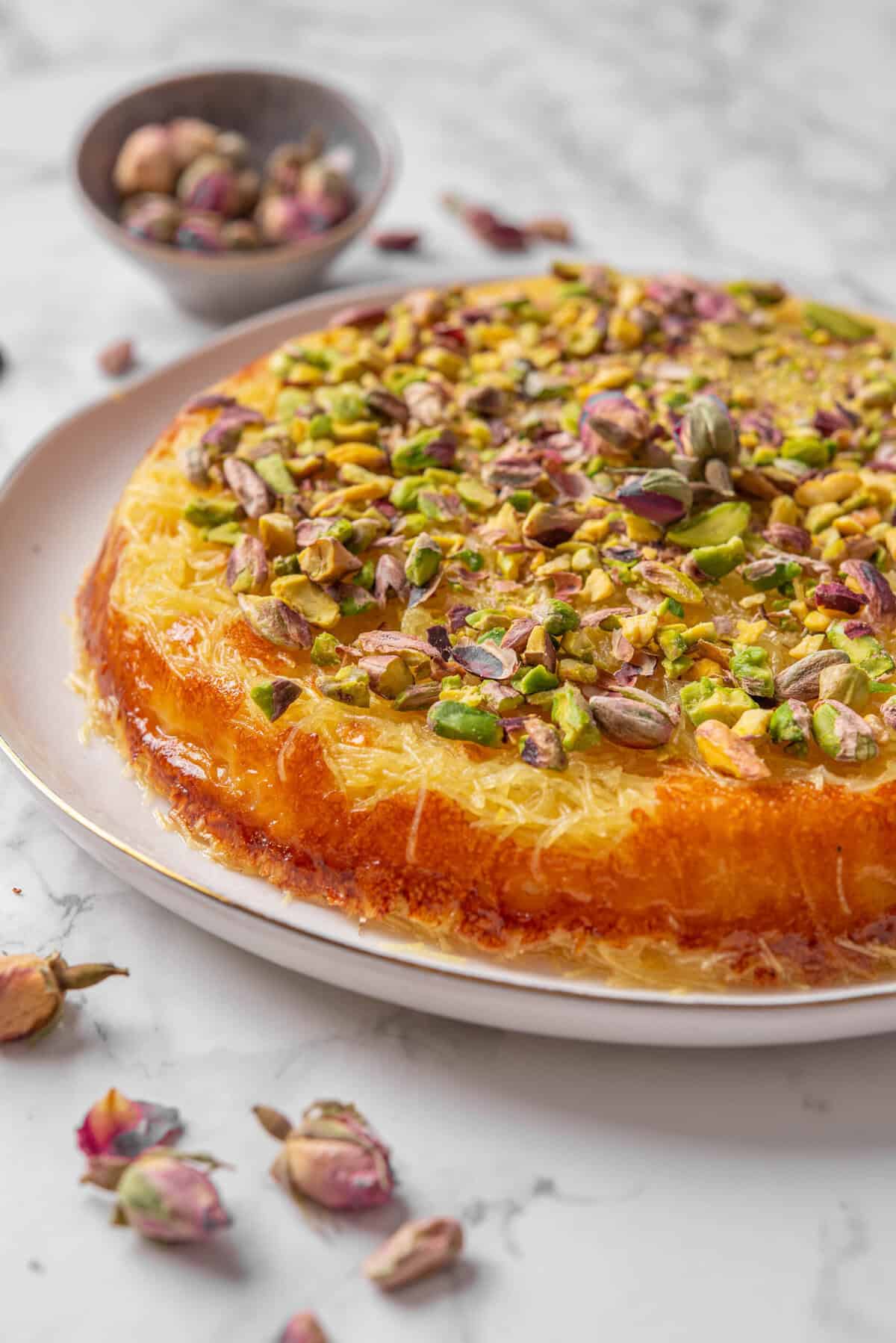
Serving Suggestions
Serve your knafeh with your favorite hot tea or coffee. If you’re looking to design a dinner menu around this dessert, there are a few dishes that would work really well. I think this Lamb Kabob recipe and this Chicken Shawarma are two excellent options. For a vegetarian dish, this hearty Falafel Bowl is perfect. Serve your mains with a side of Roasted Cauliflower With Tahini or these Roasted Beets And Carrots.
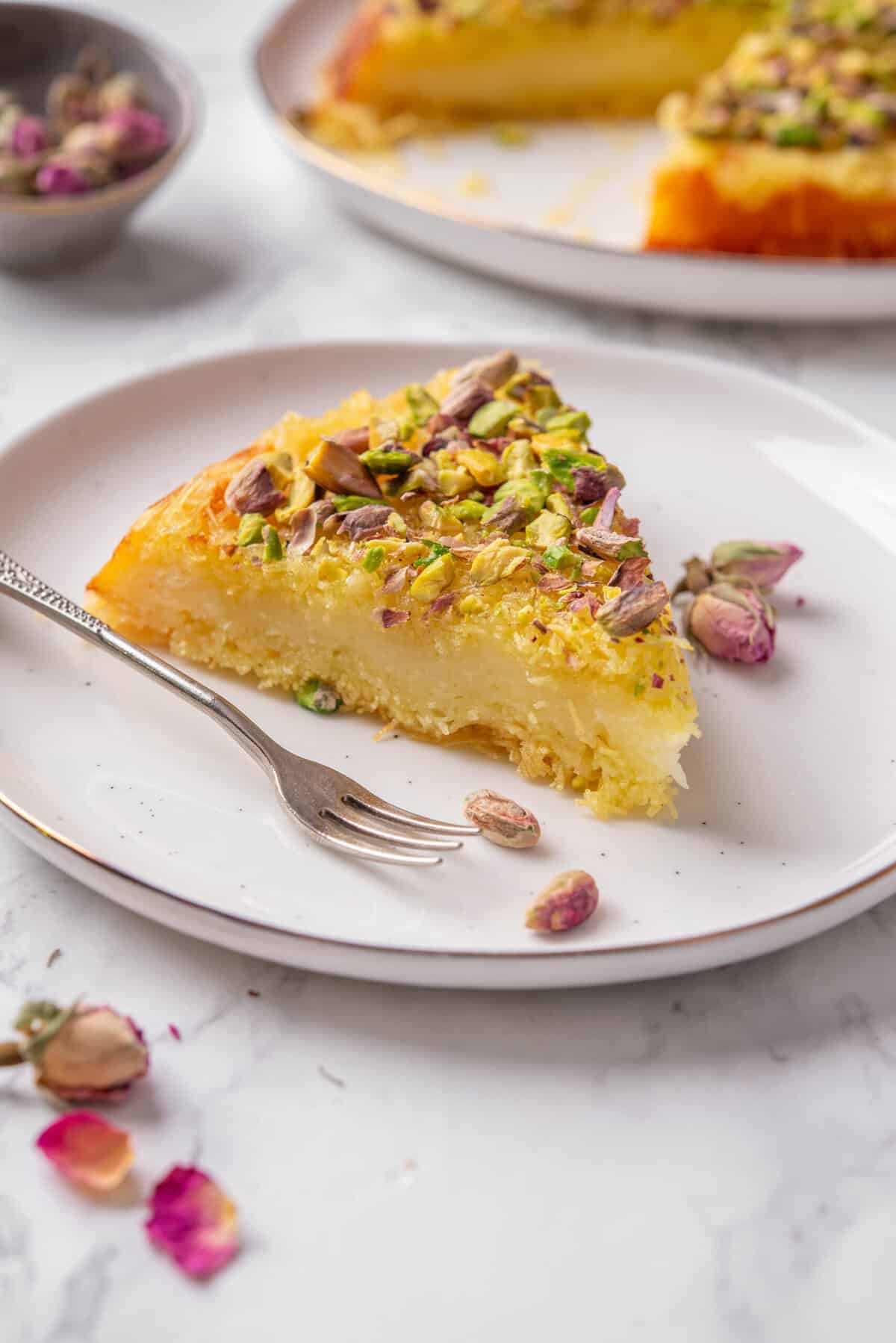

Knafeh
Ingredients
- 1 1/2 cups granulated sugar
- 1 cup water
- 1 teaspoon rose water
- 1/2 pound kataifi dough thawed (shredded phyllo dough)
- 8 tablespoon unsalted butter melted
- 1 pound unsalted white sweet cheese such as Nabulsi, Akkawi or mozzarella, freshly shredded
- 1/3 cup crushed pistachios for garnish
Instructions
-
Combine sugar and water in a saucepan over medium heat. Bring to a boil, then reduce heat and simmer until sugar is dissolved. Remove from heat, stir in rose water, and set aside to cool.

-
Preheat oven to 350°F. Toss shredded/torn kataifi dough with melted butter until evenly coated.

-
Press half of the buttered kataifi into the bottom of a greased 9-inch round baking pan. Layer the shredded cheese evenly on top and press well, then cover with the remaining kataifi, pressing gently.

-
Bake in preheated oven for 25-35 minutes, or until the edges are golden and the cheese is melted.

-
Remove knafeh from oven, immediately pour cooled syrup over the hot knafeh. Garnish with crushed pistachios. Allow to cool slightly before serving.
Nutrition
The post Knafeh appeared first on Food Faith Fitness.

